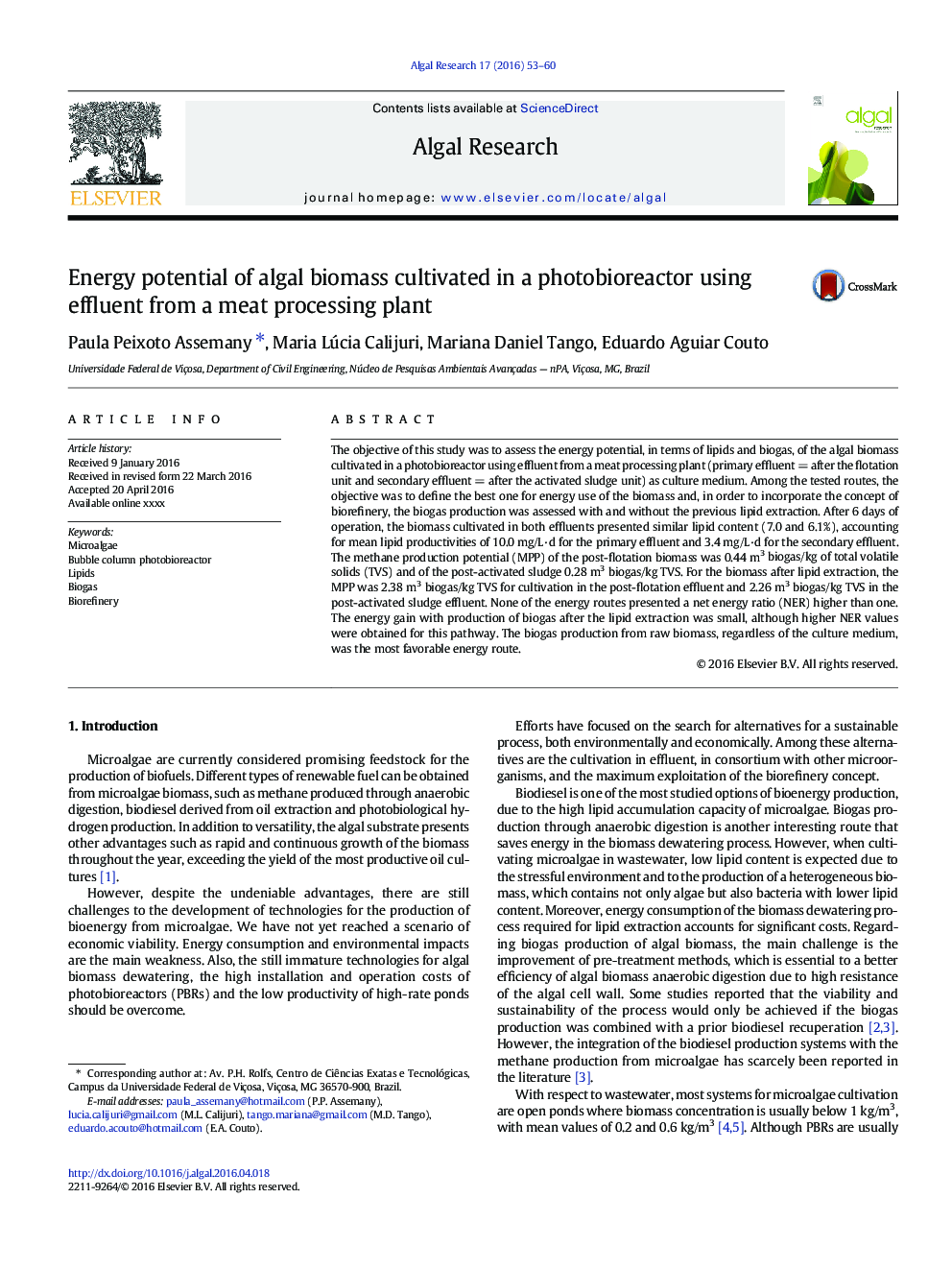| Article ID | Journal | Published Year | Pages | File Type |
|---|---|---|---|---|
| 8086902 | Algal Research | 2016 | 8 Pages |
Abstract
The objective of this study was to assess the energy potential, in terms of lipids and biogas, of the algal biomass cultivated in a photobioreactor using effluent from a meat processing plant (primary effluent = after the flotation unit and secondary effluent = after the activated sludge unit) as culture medium. Among the tested routes, the objective was to define the best one for energy use of the biomass and, in order to incorporate the concept of biorefinery, the biogas production was assessed with and without the previous lipid extraction. After 6 days of operation, the biomass cultivated in both effluents presented similar lipid content (7.0 and 6.1%), accounting for mean lipid productivities of 10.0 mg/L·d for the primary effluent and 3.4 mg/L·d for the secondary effluent. The methane production potential (MPP) of the post-flotation biomass was 0.44 m3 biogas/kg of total volatile solids (TVS) and of the post-activated sludge 0.28 m3 biogas/kg TVS. For the biomass after lipid extraction, the MPP was 2.38 m3 biogas/kg TVS for cultivation in the post-flotation effluent and 2.26 m3 biogas/kg TVS in the post-activated sludge effluent. None of the energy routes presented a net energy ratio (NER) higher than one. The energy gain with production of biogas after the lipid extraction was small, although higher NER values were obtained for this pathway. The biogas production from raw biomass, regardless of the culture medium, was the most favorable energy route.
Related Topics
Physical Sciences and Engineering
Energy
Renewable Energy, Sustainability and the Environment
Authors
Paula Peixoto Assemany, Maria Lúcia Calijuri, Mariana Daniel Tango, Eduardo Aguiar Couto,
